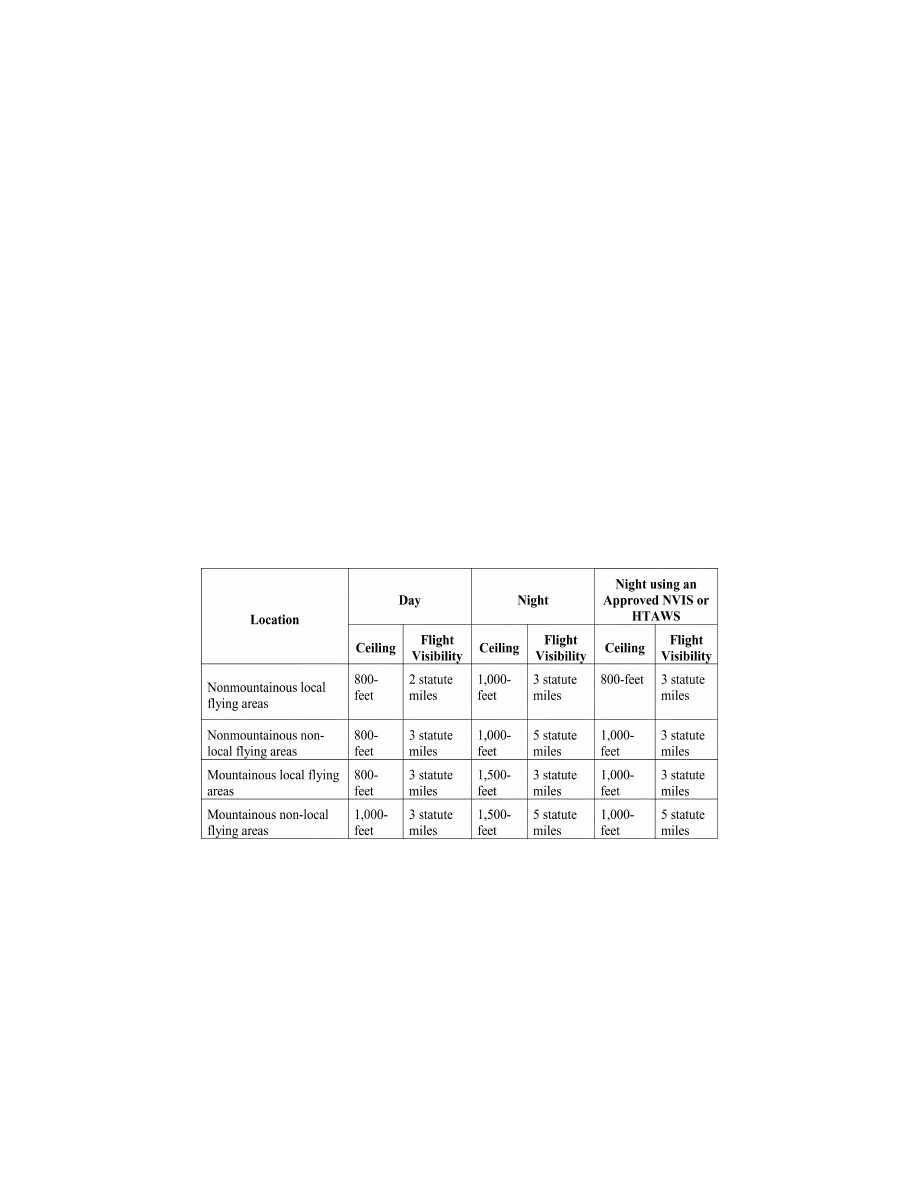
509
Federal Aviation Administration, DOT
§ 135.609
(ii) [Reserved]
(2) RTCA, Inc., 1150 18th Street NW.,
Suite 910, Washington, DC 20036, tele-
phone (202) 833–9339, and are also avail-
able on RTCA’s Web site at
http://
www.rtca.org/onlinecart/index.cfm.
(i) RTCA DO–309, Minimum Oper-
ational Performance Standards
(MOPS) for Helicopter Terrain Aware-
ness and Warning System (HTAWS)
Airborne Equipment, Mar. 13, 2008.
(ii) [Reserved]
§ 135.607
Flight Data Monitoring Sys-
tem.
After April 23, 2018, no person may
operate a helicopter in air ambulance
operations unless it is equipped with an
approved flight data monitoring sys-
tem capable of recording flight per-
formance data. This system must:
(a) Receive electrical power from the
bus that provides the maximum reli-
ability for operation without jeopard-
izing service to essential or emergency
loads, and
(b) Be operated from the application
of electrical power before takeoff until
the removal of electrical power after
termination of flight.
§ 135.609
VFR ceiling and visibility re-
quirements for Class G airspace.
(a) Unless otherwise specified in the
certificate holder’s operations speci-
fications, when conducting VFR heli-
copter air ambulance operations in
Class G airspace, the weather mini-
mums in the following table apply:
(b) A certificate holder may des-
ignate local flying areas in a manner
acceptable to the Administrator, that
must—
(1) Not exceed 50 nautical miles in
any direction from each designated lo-
cation;
(2) Take into account obstacles and
terrain features that are easily identi-
fiable by the pilot in command and
from which the pilot in command may
visually determine a position; and
(3) Take into account the operating
environment and capabilities of the
certificate holder’s helicopters.
(c) A pilot must demonstrate a level
of familiarity with the local flying
area by passing an examination given
by the certificate holder within the 12
calendar months prior to using the
local flying area.
[Doc. No. FAA–2010–0982, 79 FR 9975, Feb. 21,
2014; Amdt. 135–129A, 79 FR 41126, July 15,
2014]
VerDate Sep<11>2014
08:20 May 17, 2019
Jkt 247048
PO 00000
Frm 00519
Fmt 8010
Sfmt 8002
Y:\SGML\247048.XXX
247048
ER21FE14.021</GPH>